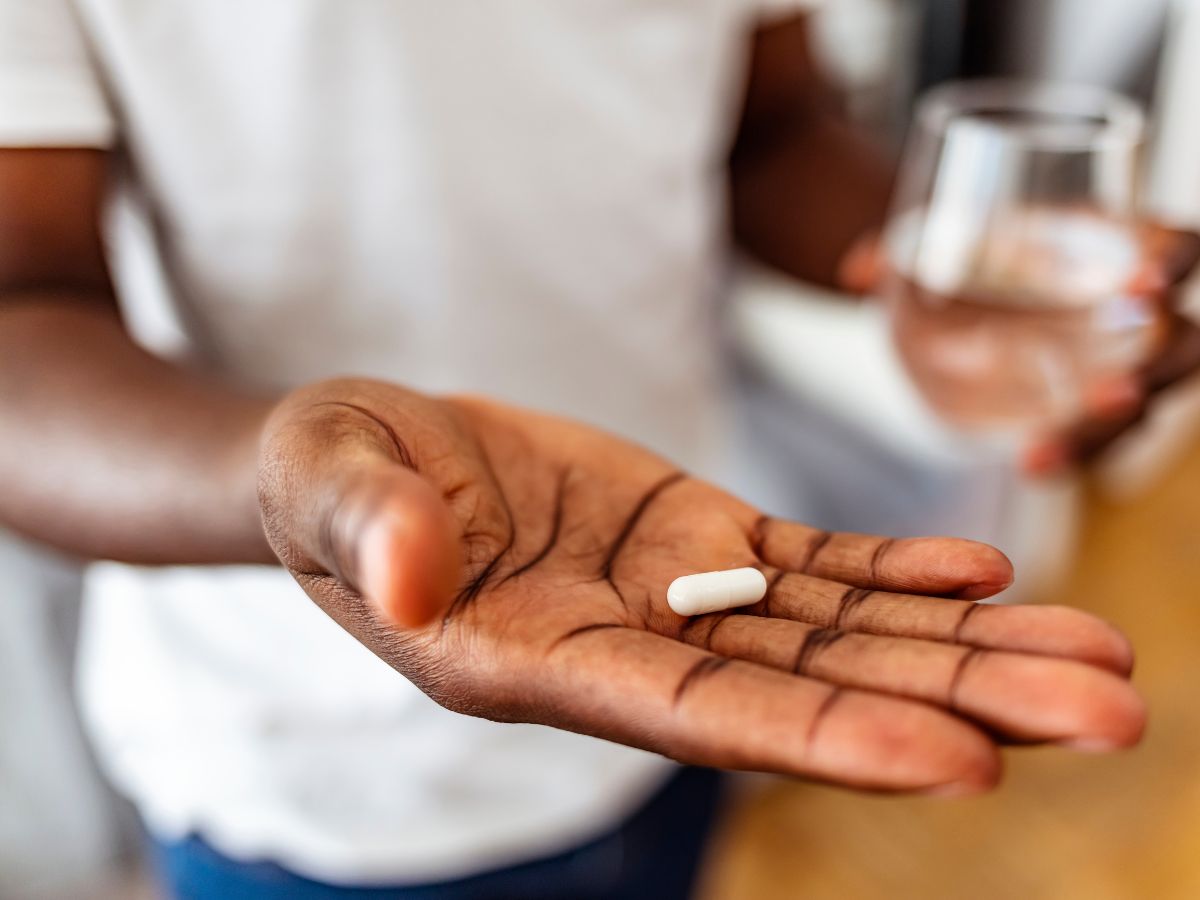Causes
Decrease in blood flow to the penis is the main cause of Erectile Dysfunction (ED).
Although age in itself does not play an important role, it is strongly correlated for ED. This also may be because of a decrease in testosterone levels from 30 onwards. Testosterone plays an important role in the process of erection.
Several diseases, including cardiovascular disease, may cause or worsen erectile dysfunction.
Many medications, including those used to treat cardiovascular disease, may also cause or worsen the problem.
In addition to physiologic causes, psychological causes such as anxiety or relationship issues, may lead to erectile dysfunction.
ED diagnosis can be a life save since it indicates atherosclerosis, or hardening of arteries which reduce blood flow to the penis.
How is Erectile Dysfunction Diagnosed?
A diagnosis of erectile dysfunction is made when a man has a consistent or recurrent inability to either obtain or maintain an erection allowing for completion of sexual activity.
Usually the diagnosis of erectile dysfunction is made after at least 3 months of onset of symptoms. However, in case of any trauma prior to the patient developing symptoms, diagnosis will be made in a shorter time.
Patients can be diagnosed according to self-reported symptoms or by physiologic testing. Partner reporting can also be used to initiate the process of screening a patient for erectile dysfunction.
Objective data will also be collected. Patients presenting with erectile dysfunction might need to be screened for other diseases, including diabetes mellitus and cardiovascular disease. This can depend on age as well.
Specific lab tests for testosterone and certain endocrine disorders, such as thyroid dysfunction, should be completed and evaluated to determine if there are secondary causes for erectile dysfunction.
Most Popular / Prescribed Erectile Dysfunction Meds are Aral PDE5 Blockers:
- Sildenafil (Viagra)
- Tadalafil(Cialis)
- Vardenafil(Levitra)
- Avanafil (Stendra)
How do Phosphodiesterase 5 (PDE5) Blockers help with Erectile Dysfunction (ED)?
PDE5 drugs are vasodilatory in function. They dilate and relax smooth muscles facilitating increased blood flow selectively.
Phosphodiesterase 5 (PDE5) is an enzyme that modulates cell signaling. By blocking/controlling the amount of this enzyme, blood flow is increased to targeted blood vessels.
In the case of ED, blood flow to the penis is increased, the increased pressure from the blood flow acts a temporary seal to keep the blood in the penis, making it rigid for a sustained period for a happy sexual intercourse.
The main cause of ED is lack of sufficient blood flow to the penis to maintain erection or have an erection. Inhibiting PDE5 enzyme relaxes muscles and increases blood flow to specific areas of the body and selectively keeps it there, for a period of time.
PDE5 inhibitors prolong the action of cGMP* by inhibiting metabolizing from PDE5 enzyme. PDE5 is found throughout the body. In the penis, PDE5 inhibitors prolong the effects of cGMP for sustained rigid erection for a satisfying sexual intercourse.
Cyclic Guanosine monophosphate is the main protagonist in the vasodilation process. Nitric Oxide(NO) is initially released by vascular endothelial cells (facilitated by testosterone) which spread to nearby vascular smooth muscle cells. Here NO activates guanylate cyclase, another enzyme that converts guanosine triphosphate to cGMP.
During the penile erection process, cGMP is metabolized through the PDE5 enzyme and cannot exert its downstream erectile effects. PDE5 inhibitors are selective, competitive, and reversible, generally working to decrease cGMP metabolism.
It is this process that has made PDE5 inhibitors such as , sildenafil (Viagra™),tadalafil (Cialis™) and vardenafil (Levitra™) mainstay of treating erectile dysfunction.
However, PDE5 inhibitors do not cause erections without sexual stimulation.
Mechanism of an Erection
When the blood vessels of the corpora cavernosa(cave like), erectile tissue enveloping the length of the penis, relax and open up, blood rushes in through the cavernous arteries to fill them. The blood then gets trapped under high pressure, causing a firm erection.
Sexual stimulation leads to high amounts of Nitric Oxide released from endothelial cells and penile nerves which relaxes the smooth muscles- corpus cavernosum, congesting the blood vessels leading to a prolonged erection.
- Sensory and mental stimulation, touch, stroking the penis leads to erection.
- During sexual arousal, nerve messages begin to stimulate the penis.
- Signals from the brain and penile nerves cause the muscles of the corpora cavernosa to relax, allowing blood to flow in and fill the open spaces. The blood creates pressure in the corpora cavernosa, making the penis expand and creating an erection.
- A membrane - tunica albuginea, that surrounds the corpora cavernosa, traps the blood in the corpora cavernosa, for a sustained erection. This process is reversed when the muscles in the penis contract, stopping blood flow and opening blood vessels that flow out of the penis.
How are the PDE5 Inhibitors Different?
All PDE5 inhibitors are similar in their functioning mechanism, efficacy and toxicity profiles. Differences in molecular structures, the PDE5 targeted, onset of action, half life, whether eating fatty food matters, side effects are some of the factors that differentiates these ED meds.
Avanafil is considered second generation since it is the newest of the drugs, while Sildenafil is the earliest drug released in 1998.
Molecular Structure
Sildenafil and Vardenafil have the same molecular structure
Tadalafil differs in its structure.
The chemical structure of avanafil is different from the standard (nucleo)base/sugar/phosphate diester model of sildenafil, vardenafil and tadalafil.
Avanafil’s unique property of binding to PDE5 independent of the spatial orientation of the molecule, increases its clinical efficacy in targeting PDE5 enzyme.
Onset of action in minutes
- Avanafil - 15
- Sildenafil - 30-60
- Vardanafil - 15-30
- Tadalafil - 15-45
Avanafil has the fastest onset time. Avanafil is also a newer, second generation drug.
Duration of action (hr)
- Avanafil - 6 hours
- Sildenafil - 12 hours
- Vardenafil - 12 hours
- Tadalafil - 36 hours
Time taken to reach maximum concentration in the blood in minutes
- Avanafil - 30-45
- Sildenafil - 60
- Vardenafil - 60
- Tadalafil - 120
Half Life
- Sildanafill - 4 hours
- Vardanafil - 4-5 hours
- Tadalafil - 17.5 hours
- Avanafil - 3-5 hours
The half-life of a drug refers to the time the active substance in the drug is reduced by half.
This depends on metabolization and excretion by the body. Half life can range from a few hours to days, even weeks.
*HIV Protease inhibitor
Ritonavir (600 mg twice daily), a strong CYP3A4 inhibitor, which also inhibits CYP2C9, increased STENDRA 50 mg single-dose Cmax and AUC equal to approximately 2-fold and 13-fold, and prolonged the half-life of avanafil to approximately 9 hours in healthy volunteers. Do not use STENDRA in patients taking ritonavir.
Stendra is the brand name for Avanafil
Fatty Foods
Fatty foods in the stomach while taking oral PDE5 inhibitors alters its effects on the physiological response and onset of action.
Delay with high-fat meals highest in Avanafil at 60 to 75 minutes. 60 minutes for both Sildenafil and Vardanafil.
Only Tadalafil has 0 minute delay or a high fat meal does not cause any effect on onset of action.
*Compounded sildenafil dispensed at Science&Human does not have any issues with fatty food ingestion.
As per one study - measuring successful erection, and sexual intercourse:
- 35% of patients within 14 minutes on Sildenafil
- 21% of patients within 10 minutes on Vardenafil
- 16% of patients within 16 minutes on Tadalafil
*This study was done before Avanafil was approved as a drug.
Side Effects
Most common are - headache, flushing, runny nose, stomach pain, back pain (Cialis),and indigestion.
Due to targeting of different PDE5 blocker, Sildenafil can cause temporary vision problems. This is due to the targeting of a PDE5 blocker that is also found in the retina. This has also been reported in other PDE5 blockers as well.
Lower doses are used for individuals with liver and/or kidney disease. PDE5 inhibitors may cause dizziness or a sudden drop in blood pressure.
More on side effects, contra-indications and dosage discussed product-wise.
Information is culled from many sources for this article.
ED Therapy at Science&Human
The entire process is designed to make the patient feel extremely comfortable to discuss, since often reluctance to discuss ED is what prevents men from seeking ED therapy.
Everything ONLINE process from initial consult/medical history capture, diagnosis, and meds delivered home makes it extremely comfortable to seek ED therapy at Science&Human either combined with TRT if needed, or stand alone.
Sex Therapy sessions available online if needed.




